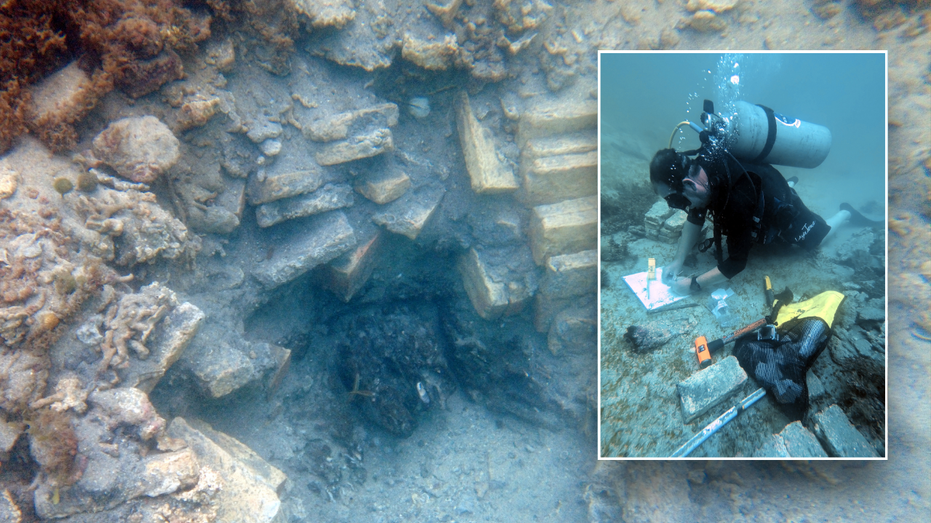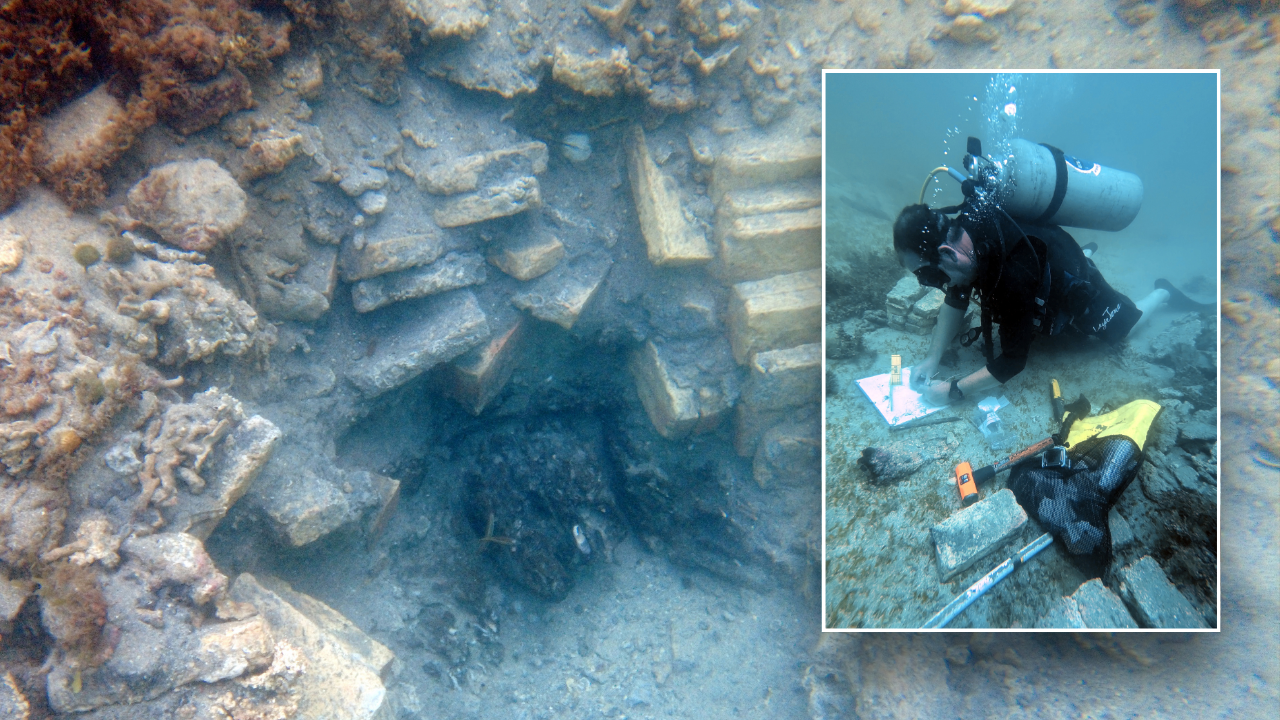
Archaeologists recently made a startling discovery: They found that two 18th-century shipwrecks off the coast of Central America were actually two Danish slave ships.The ships, named Fridericus Quartus and Christianus Quintus, are located in shallow waters off Costa Rica’s Cahuita National Park. The 18th-century vessels were shipwrecked in 1710, according to the National Museum of Denmark.”Fridericus Quartus was set ablaze, while Christianus Quintus had its anchor rope cut, following which the ship was wrecked in the surf,” the museum’s press release noted. “Until now, it has not been clear exactly where the ships were lost.”RARE 4,000-YEAR-OLD MUSICAL INSTRUMENT ‘BURIED IN THE GROUND’ PUZZLES ARCHAEOLOGISTSPictures show divers carefully examining the shipwreck, which shows signs of significant decay from the past 315 years.Though the ships were excavated in 2023, researchers didn’t know that they were slave ships until recently. The vessels were long believed to be pirate ships. Divers recently unveiled the findings from an excavation of two Danish slave ships, Fridericus Quartus and Christianus Quintus. The vessels were long believed to be pirate ships. (Jakob Olling / National Museum of Denmark)The excavation involved, in part, taking samples from the wood of the ships, as well as yellow bricks that were part of the ship’s cargo. Researchers also conducted dendrochronological analyses — tree-ring dating — to determine where the wood came from. They found it came from Northern Europe.”The timbers originate in the western part of the Baltic Sea, an area that encompasses the northeastern German province of Mecklenburg, as well as Schleswig-Holstein, Denmark and Scania – and that the tree was cut down sometime during the years 1690-1695,” the release said. LONG-LOST CAPITAL OF ANCIENT CIVILIZATION MAY HAVE FINALLY BEEN UNCOVERED, ARCHAEOLOGISTS SAY: ‘UNIQUE FIND'”The wood is, moreover, charred and sooty, which confirms what historical sources say about one of the ships being set ablaze.”Divers also found clay pipes, which the museum describes as “ordinary, Dutch-produced pipes that were also used onboard Danish ships.””This provides two pieces that have been missing.” “The size, shape and patterns of the pipes suggest that they were produced in the period right before the ships became wrecked in 1710,” the press release added. “Clay pipes were rarely used for more than five years.”For more Lifestyle articles, visit foxnews.com/lifestylePictures also show the remarkable yellow bricks that survived the shipwreck, which were produced in Flensburg “for use in Denmark and in the Danish colonies in the 18th and 19th centuries.” Researchers found that the yellow clay bricks from the shipwreck came from Denmark. (Jakob Olling / National Museum of Denmark)”In other European countries, other kinds of bricks and stones were in fashion when new buildings were erected,” the museum said.”The clay comes from Denmark – quite specifically, from either Iller Strand or Egernsund,” the statement added.”Both locations are situated by Flensburg Fjord, which was, in the 18th century, home to a sizeable brick-producing industry.”CLICK HERE TO SIGN UP FOR OUR LIFESTYLE NEWSLETTERAfter samples from the excavation were analyzed at the National Museum of Denmark and the University of Southern Denmark, researchers concluded the findings corroborate what historical sources say about the history of the ships.David Gregory, a marine archaeologist at the National Museum of Denmark, said that the results fit “perfectly” with historical accounts about one of the ships burning. Archaeologists conducted wood-dating analyses on the remains of the shipwreck to determine its age. (Jakob Olling / National Museum of Denmark)”The analyses are very convincing and we no longer have any doubts that these are the wrecks of the two Danish slave ships,” Gregory said. “The bricks are Danish and the same goes for the timbers, which are additionally charred and sooty from a fire. This fits perfectly with the historical accounts stating that one of the ships burnt.””We no longer have any doubts that these are the wrecks of the two Danish slave ships.” National Museum of Denmark marine archaeologist Andreas Kallmeyer Bloch said he’d “come close to giving up” during the long research process – but is stunned by the results.”This is undoubtedly the craziest archaeological excavation I’ve yet been part of,” Bach said. Danish researchers are now certain that the shipwrecks were once two slave ships. (John Fhær Engedal Nissen / National Museum of Denmark)”Not only because it matters greatly to the local population, but also because it’s one of the most dramatic shipwrecks in the history of Denmark, and now we know exactly where it happened.””This provides two pieces that have been missing from the history of Denmark.”CLICK HERE TO GET THE FOX NEWS APPFox News Digital reached out to the National Museum of Denmark for additional information.
Archaeologists identify two shipwrecks as being former slave ships: ‘Very convincing’




